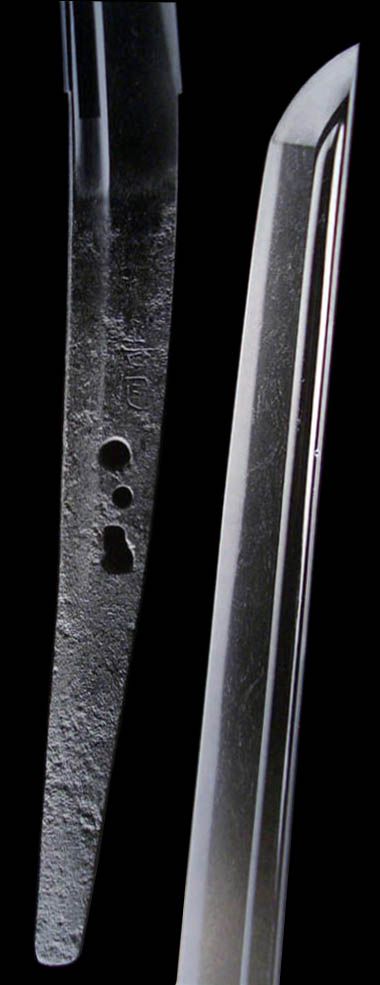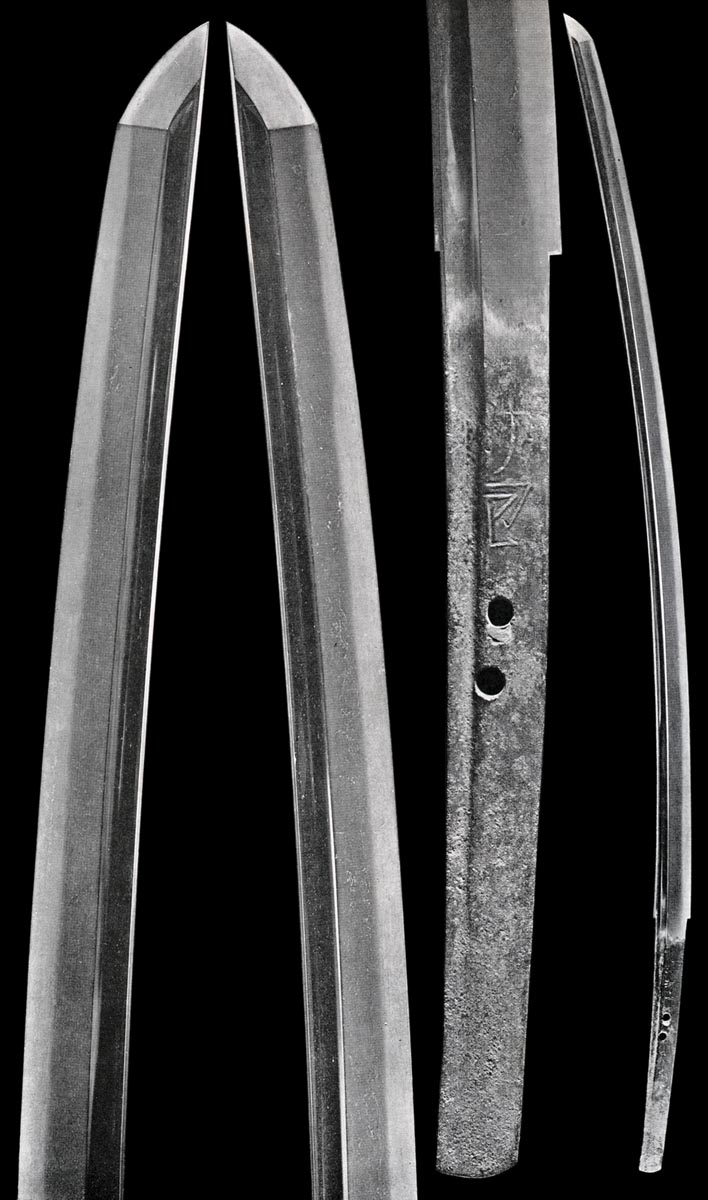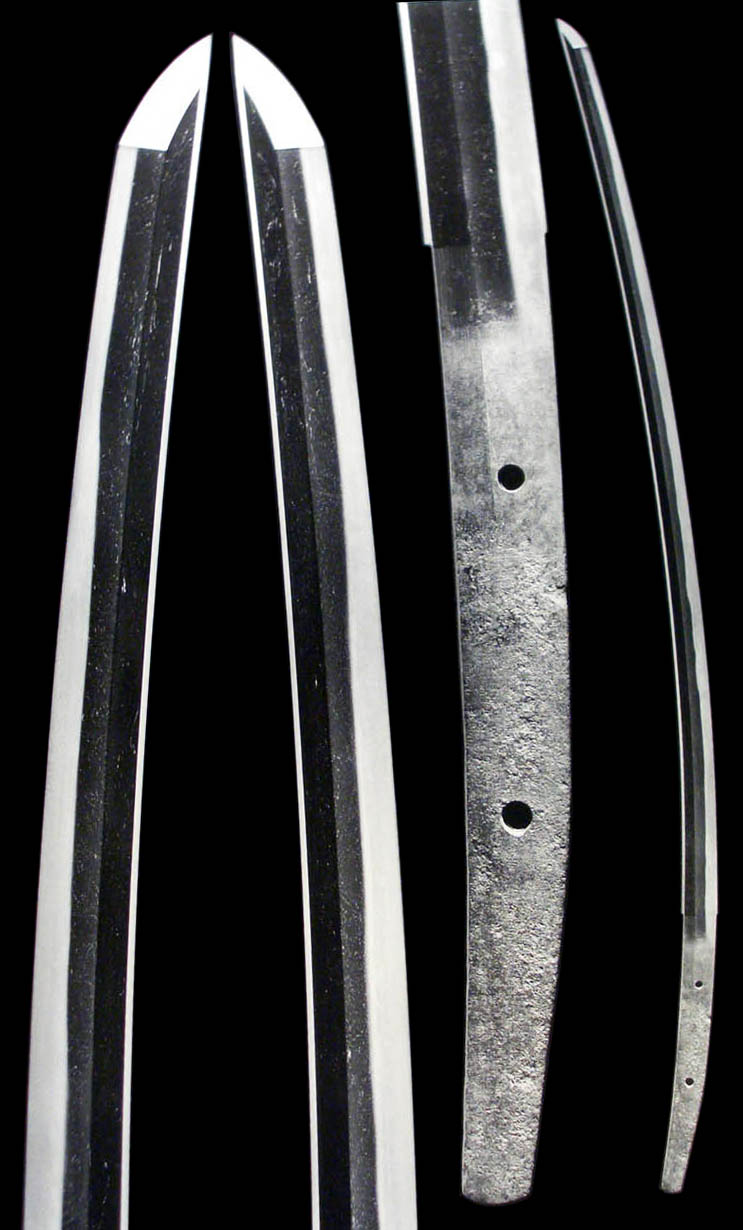| © Copyright
Robert Cole 2015 - No copying or distributing BIZEN KO-BIZEN |
|
Technical: SUGATA - HEIAN KOSHIZORI where the arc straightens in the upper. KO-KISSAKI. Origins are YAMASHIRO style, some early pieces may be in that style. Shallow height of the back ridge. HADA - Finely worked MOKUME or ITAME/MOKUME mix with a cast of deep transparent blue. CHIKEI and JI-NIE. NIE JI-BA may be found. KO-BIZEN is known for very healthy steel, a noted point. HAMON - Finely done KO-NIE in NIOI-FUKASHI KO-MIDARE, SUGU KO-CHOJI. Perhaps wider MIDARE BA of GUNOME and CHOJI mixes defined of ASHI, KINSUJI and SUNAGASHI. Some lines undulate in height, and there will be a high degree of complexity. BOSHI - SUGU or SUGU KO-MIDARE with KO-MARU. NAKAGO - Long, gently curved HEIAN styles. Some were KIJIMATA. Signatures are usually the smith name only, but some longer. There were two original KO-BIZEN groups: TOMONARI followed by MASATSUNE. Traditional study teaches KO-BIZEN began in EI-EN 987 with these and other smiths. Present examples appear from NIN-PYO 1151, and are the subject of most modern descriptions. The early dates occupy a hallowed throne in scholarship and need not be violated, as appraisal should always fall to correct placement of time for individual pieces. GEN-RYAKU smiths are said to be in the 5th generation. The order of importance in appraisal consideration for KO-BIZEN: 1st - TOMONARI 2nd - MASATSUNE 3rd - NOBUFUSA and his "Three HIRAs" Appraisal: HEIAN BIZEN swords will bring TOMONARI and MASATSUNE to mind. The first step is to weigh a differentiation between these masters. TOMONARI - Look for O-HADA. - Narrow YAKIBA in BOSHI has small KO-MARU or TOGARI-like head. - NAKAGO is refined. Flattened KURIJIRI is HA-AGARI (HA raised) or even slightly KATAYAMA. MASATSUNE - Tight, well-knit grain. - CHU-SUGUHA BOSHI with KO-MARU and short KAERI. - Original NAKAGO seems comparatively crude and terminates in rounded KURIJIRI. Note: -KO-BIZEN mark is very healthy steel. One doubts one's eyes. -Long, bold signatures: Look to TOMONARI School. |
 Yoshikane Tachi - Ubu ZaiMei Nakago In Private Ownership |
 |
|||
|
Sukekane
- Kokuho Sukekane - Kokuho Nagasa: 73.3cm Moto-Haba: 3cm Shinogi-tsukuri, Ihori-Mune, Koshizori Tachi. Bo-Hi both sides. Ko-Itame Hada has standing Midare-Utsuri. Asaki-Notare Chu-Sugu Ko-Midare Ba of Nioi-Fukashi and Nie with Ashi, Hotsure and a subtle Nijuba in places. Hoso-Sugu Notare-Komi Boshi with small Ko-Maru at the Saki. Ubu Kurijiri with two Mekugi-ana. Signed in the upper. Sukekane |
 Yoshikane Tachi - In Private Ownership |
|